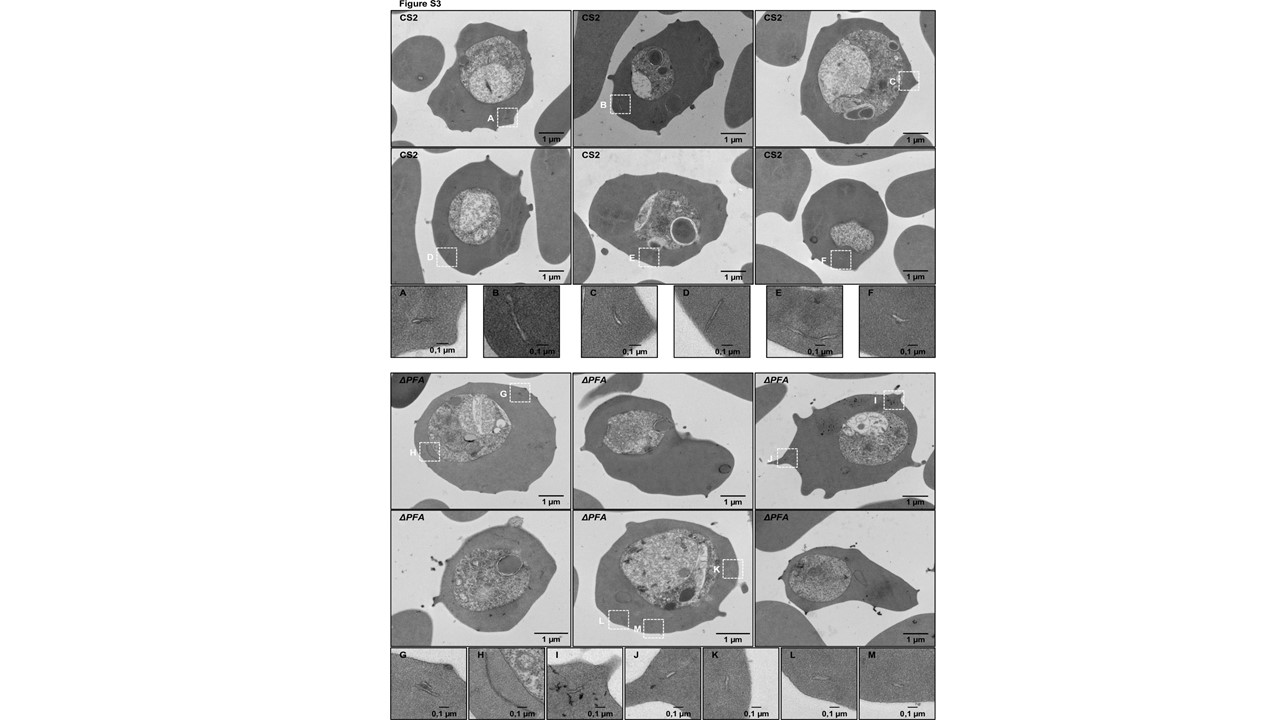TEM images of CS2 and ΔPFA. Marked areas are enlarged in the bottom panels to show Maurer´s cleft morphology in more detail. Transmission electron microscopy (TEM) on thin sections prepared from RBCs infected with either WT CS2 or ΔPFA parasites substantiated our observations. CS2 parasites produced
clearly defined electron-dense knob structures of a restricted diameter and height above the RBC plasma membrane, whereas ΔPFA displayed eKnobs extending from the RBC surface into the external medium. The lumen of these eKnobs was often extremely electron dense, hinting at their molecular relation to knobs. Occasionally we observed membrane-bound structures extending from RBCs infected with CS2 parasites, but the lumen of these structures was not electron dense; therefore, these structures cannot be classed as eKnobs. The morphology of Maurer’s clefts showed the normal variation in morphology in
both samples. Several clefts appear to lie perpendicular to the host cell membrane, but this phenotype was observed in both samples.
Diehl M, Roling L, Rohland L, Weber S, Cyrklaff M, Sanchez CP, Beretta CA, Simon CS, Guizetti J, Hahn J, Schulz N, Mayer MP, Przyborski JM. Co-chaperone involvement in knob biogenesis implicates host-derived chaperones in malaria virulence. PLoS Pathog. 2021 Oct 6;17(10):e1009969.
